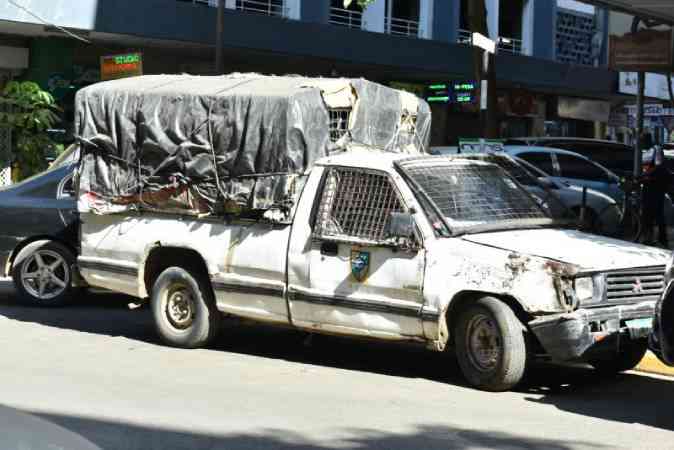Nairobi Governor Johnson Sakaja has been asked to buy new vehicles for the city inspectorate as the ones they are currently using are in a very sorry state.
City residents say the vehicles the kanjo askaris use to carry out arrests in the city centre look like 'tetanus traps', are unroadworthy and a shame to the county government.

Many people, especially hawkers who have been arrested and bundled into the vehicles for selling their wares in restricted areas, complain that the vehicles are very old and dirty.
"Those vehicles... I believe they were being used in the era of the late President Daniel Moi. If you find yourself inside one, you can hardly breathe as they smell badly," said Michael Mutinda, a hawker.
On a number of occasions, city askaris have been seen hanging on the doors of the county government vehicles in the CBD while carrying people who have been arrested by the askaris.
Members of the street families, including those sniffing glue, have also on many occasions been bundled into those unsightly vehicles.
And for the unlucky party-goers who have found themselves bundled in the tetanus traps on Friday night, mostly for being in drunken street fights, the kanjo vehicles are pure hell.
Restore order
On August 29 while addressing county workers for the first time since assuming office, Sakaja announced that he was going to effect a number of changes in the city among them making it clean.
He said that he would streamline services by ensuring that order is restored in the city.
"Order in the city will be followed by everyone including me as your governor. No one will be above the law for example street lights must be obeyed by everyone and littering of garbage must be in designated place for all of us to use," stated Sakaja.
The governor also disclosed that hawkers will do their business in designated zones. Hawking has been a serious challenge in the Central Business District (CBD) where licensed traders have been complaining their premises are obstructed.
Hawking, according to residents, is still going on as the county government seems not to have shown the operators the areas they can work from.
"They are still seen in different streets doing their work especially in the evening and obstructing pedestrians," said Alice Achieng.
At times, the hawkers engage in running battles with city askaris with some of them, including women carrying children, and bundled in the inspectorate vehicles. [Collins Kweyu]
 The Standard Group Plc is a multi-media organization with investments in media platforms spanning newspaper print
operations, television, radio broadcasting, digital and online services. The Standard Group is recognized as a
leading multi-media house in Kenya with a key influence in matters of national and international interest.
The Standard Group Plc is a multi-media organization with investments in media platforms spanning newspaper print
operations, television, radio broadcasting, digital and online services. The Standard Group is recognized as a
leading multi-media house in Kenya with a key influence in matters of national and international interest.

